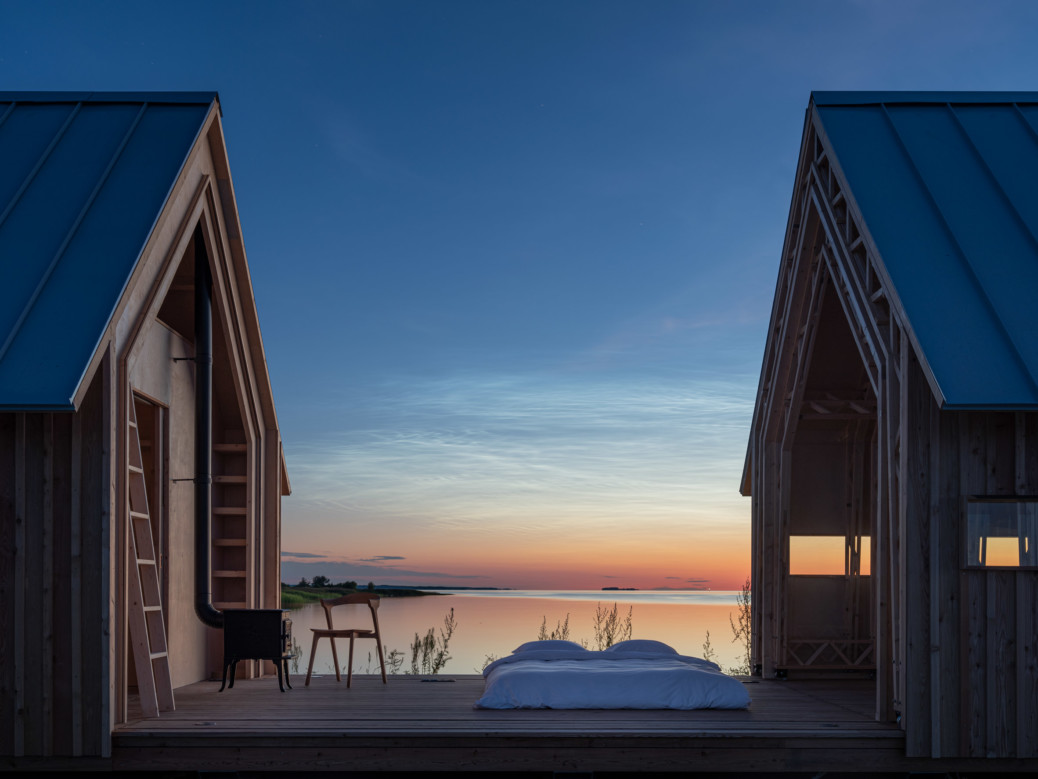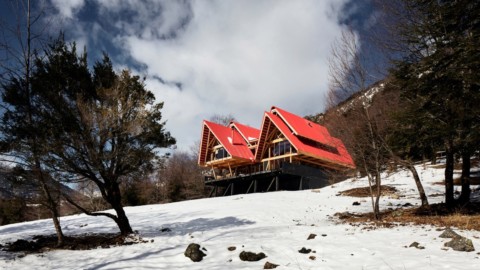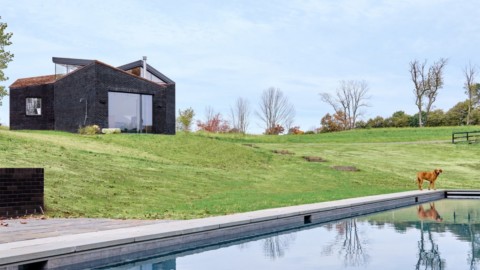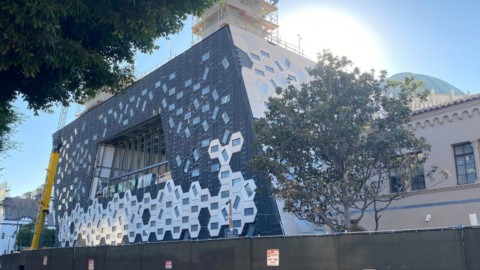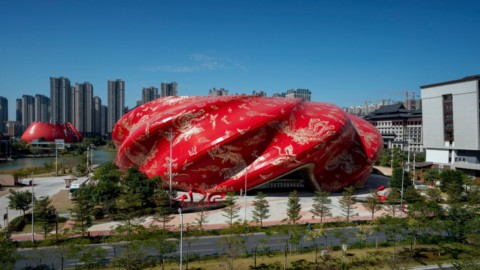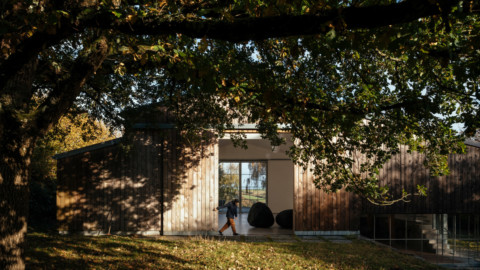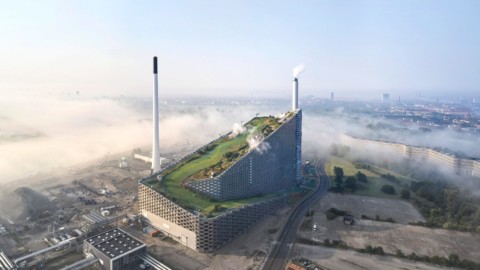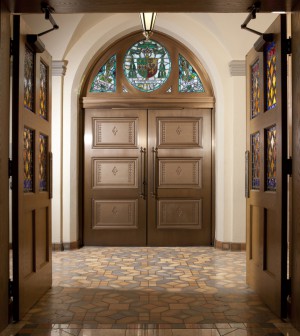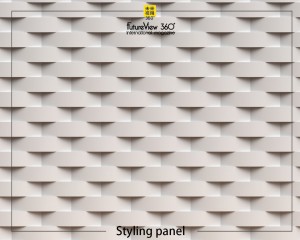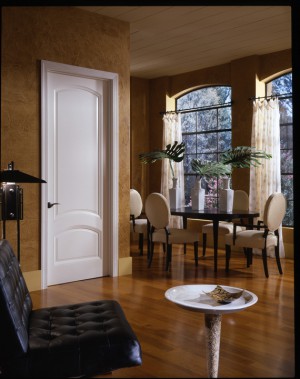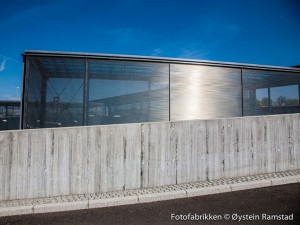Architectural designer Caspar Schols has developed the design for a garden shed with moving walls that he built for his parents into a flat-pack cabin for living and for working.
Schols drew on the Garden House pavilion he completed before architecture school in 2016 to create two commercially available cabins: the ANNA Stay home and the ANNA Meet workplace.
As with Garden House, the cabins have an inner beam-and-glass structure that is separated from the outer wooden walls and the metal roof.
Both the inner and outer parts are set on runners so that the elements can be moved to create different layouts.
建築設計師卡斯珀·舒爾斯(Caspar Schols)開發了一個帶活動牆的花園棚的設計,他為父母建造的這是一個平整的小屋,用於居住和工作。
斯科爾斯借鑒了他在2016年建築學院畢業之前完成的花園別墅展館,創建了兩個商業上可用的小屋:ANNA Stay home和ANNA Meet工作場所。
與花園別墅一樣,船艙也有內部的梁玻璃結構,與外部的木牆和金屬屋頂隔開。
內部和外部零件都設置在流道上,以便可以移動元素以創建不同的佈局。
FROM:Caspar Schols develops Cabin ANNA from the garden shed he built for his mother
“[It is] a sellable, fully inhabitable house, a flat-pack that could be built and re-built anywhere in the world,” Schols said.
“A dynamic home in the shape of an open platform to live with rather than against the elements, by playing with the configuration of the layers of the house – just like the way you dress yourself to suit different weather conditions, occasions and moods.”
斯科爾斯說:“這是一種可出售,完全可居住的房屋,是一種扁平式房屋,可以在世界任何地方建造和重建。”
“以開放平台的形式建造的充滿活力的房屋,可以與房屋的各個層次進行互動,而不是與元素抗衡,就像您打扮自己以適應不同的天氣條件,場合和心情的方式一樣。”
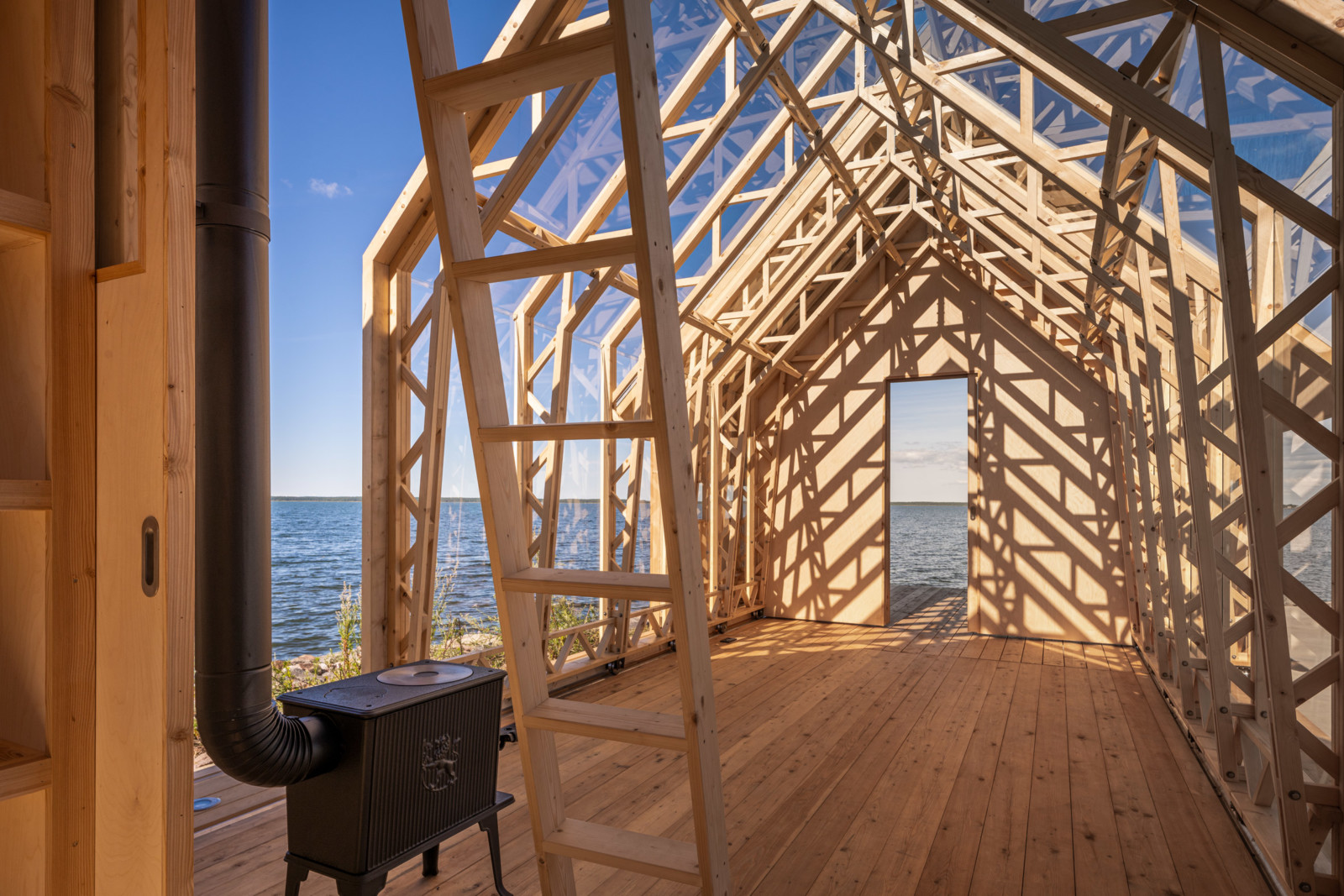
While the original version had four moving sections – two inner parts and two outer sections – ANNA Stay is simplified so that just two sections move on wheels.
“ANNA Stay has two sliding shells instead of the four in the original Garden House,” Schols told Dezeen. “But the two are longer and cover more area.”
“It also has a fixed part which houses a kitchen, shower, toilet and storage space,” he added.
原始版本具有四個運動部分-兩個內部部分和兩個外部部分-ANNA Stay得以簡化,因此只有兩個部分可以在車輪上運動。
斯科爾斯對Dezeen表示:“ ANNA Stay擁有兩個滑蓋,而不是原始的花園別墅中的四個。” “但是兩者更長,覆蓋的面積更大。”
他補充說:“它也有一個固定部分,裡面裝有廚房,淋浴,衛生間和儲藏空間。”
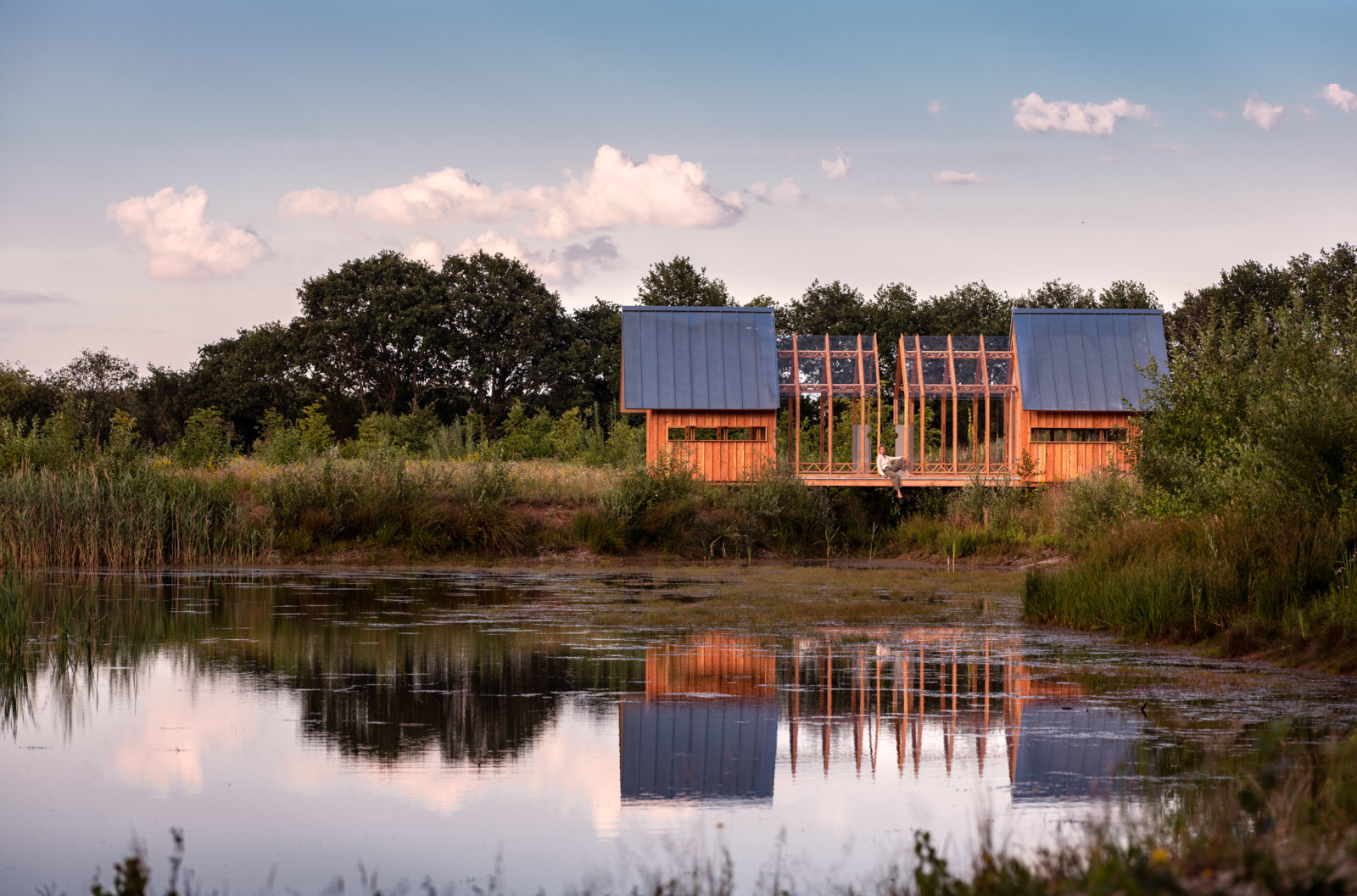
A bedroom and lounge are within the moving volume, so they can be opened up entirely to the outdoors, or used for other activities.
ANNA Stay also has a mezzanine level in the non-moving half providing space for a second bed.
臥室和休息室位於移動空間內,因此它們可以完全向戶外打開,或用於其他活動。
ANNA Stay在不可移動的一半中還設有一個夾層,為第二張床提供了空間。
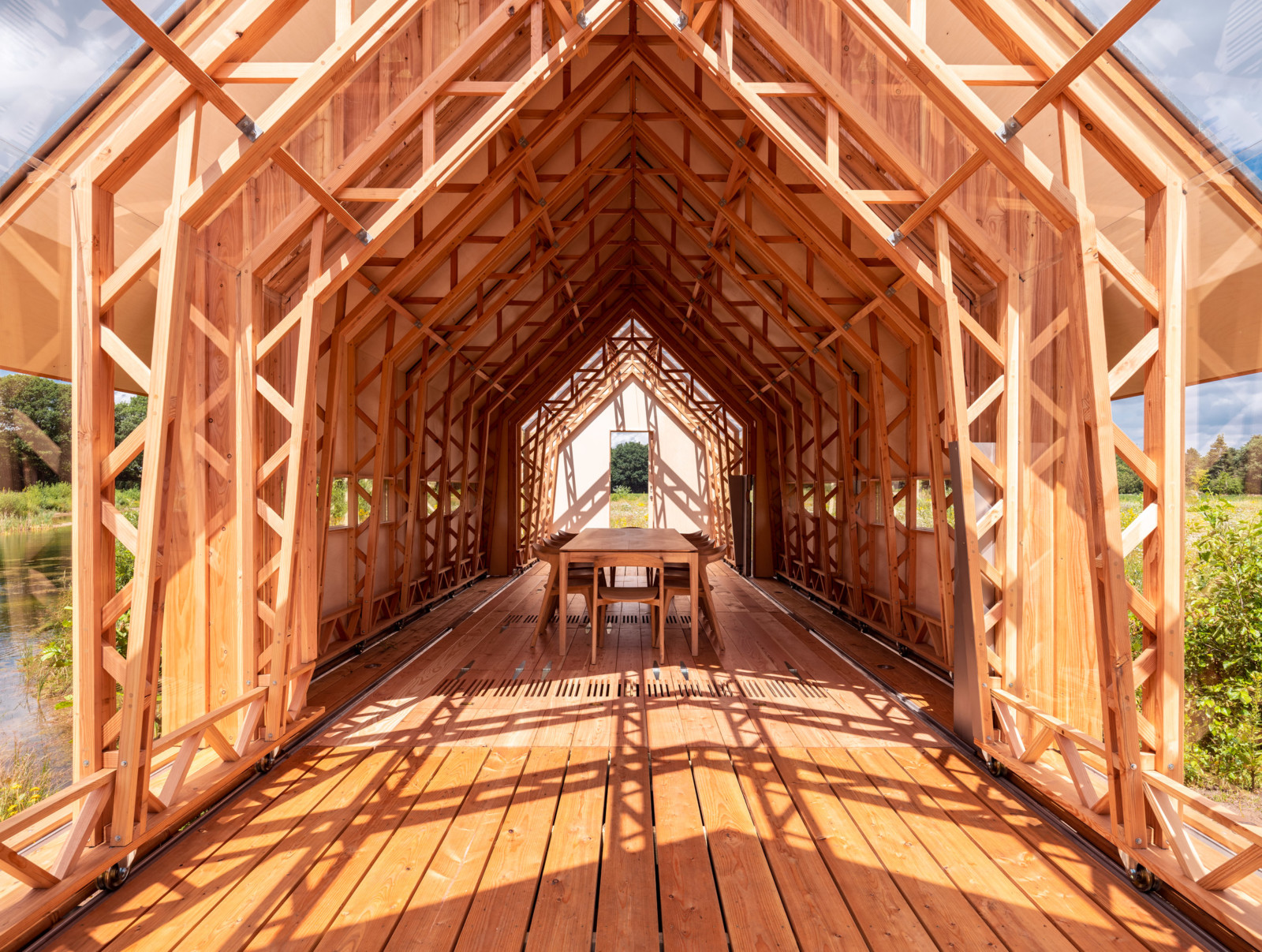
ANNA Meet, meanwhile, is intended as a cabin for gatherings, for friends, work or parties, or as an office.
Like Garden House it has four moving parts so it can form an enclosed wooden cabin, open up in the middle, or make one long space for gatherings.
The walls and structure of both cabins are made from untreated larch wood and then insulated by five centimetres of sawdust.
Inside, the wooden walls are lined with pale birch plywood. Horizontal windows in the wood walls are intended to offer views from a lower level – like sitting down or in bed.
Both ANNA Stay and ANNA Meet are designed to be transported to site either fully built or flat-packed, and come on or off-grid versions.
同時,ANNA Meet旨在用作聚會,朋友,工作或聚會的小木屋,或作為辦公室。
像花園別墅一樣,它有四個活動部分,因此它可以形成一個封閉的木製小屋,在中間打開,或者為聚會提供一個較長的空間。
兩艙的牆壁和結構均由未經處理的落葉松木製成,然後用五厘米的木屑進行絕緣。
在內部,木牆襯有淡白樺木膠合板。 木牆中的水平窗戶旨在提供較低水平的視野-例如坐下或躺在床上。
ANNA Stay和ANNA Meet均設計為可以運輸到完全建造或扁平包裝的現場,也可以在離網或離網版本中運輸。
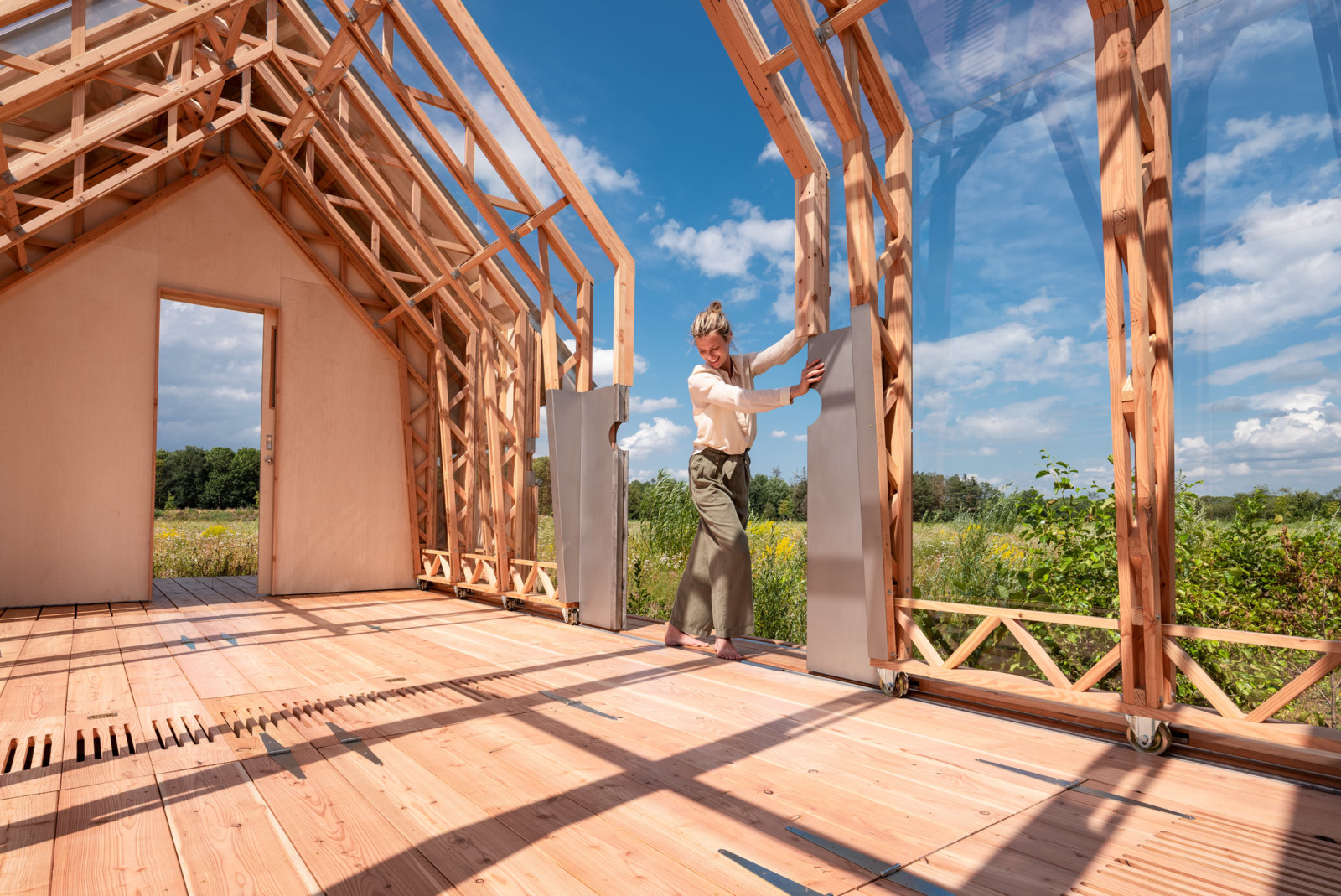
Schols originally came up with Garden House because his mother wanted a flexible space she could use for dinner parties with friends, theatre performances by her grandchildren, painting and meditating.
“It was much more difficult to turn a one-off design into a reproducible and affordable product then I expected,” he said.
斯科爾斯最初提出“花園別墅”是因為他的母親想要一個靈活的空間,可用於與朋友共進晚宴,孫子孫女的戲劇表演,繪畫和冥想。
他說:“將一次性設計變成可複制且負擔得起的產品要困難得多。”
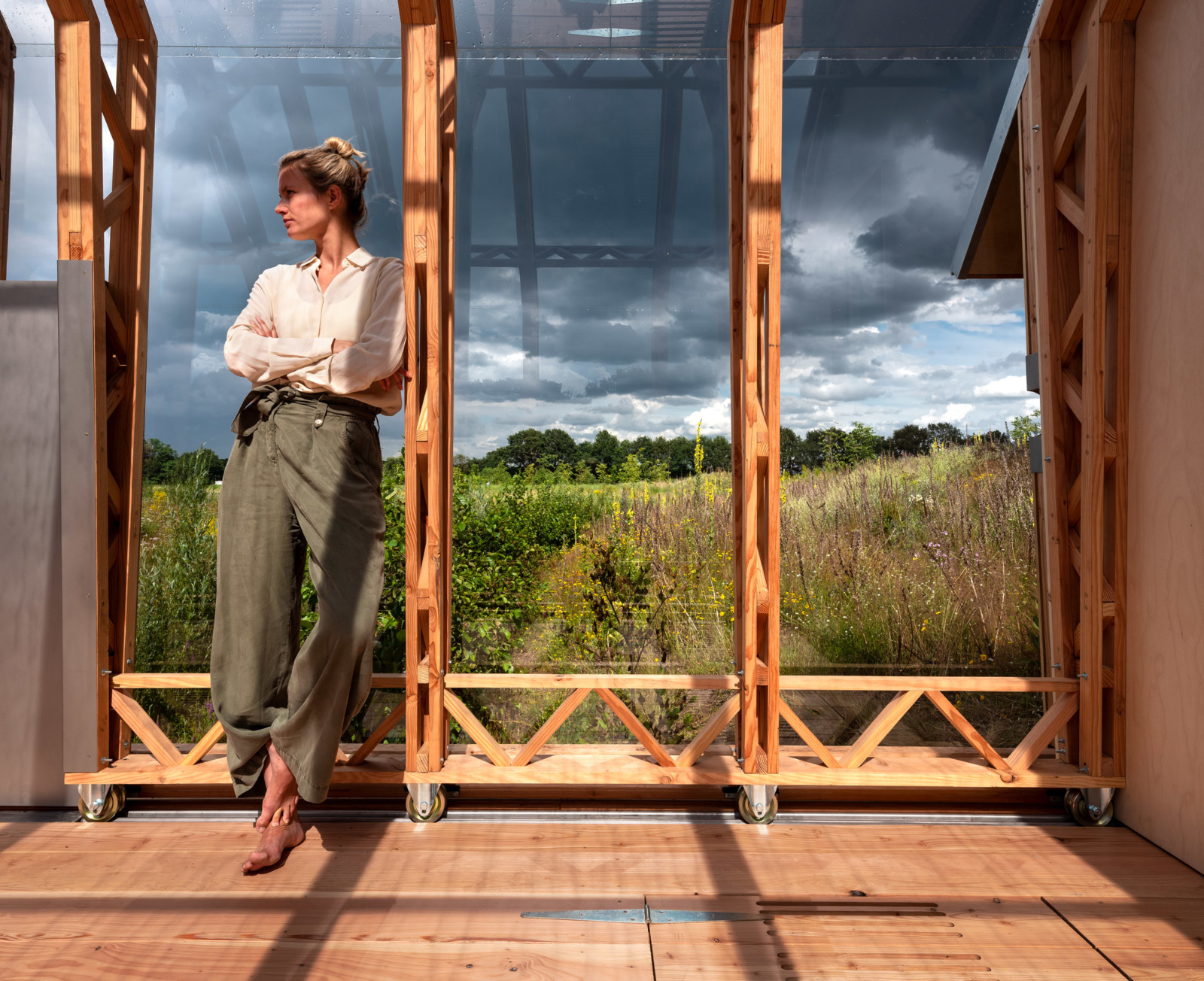
Schols went to study at London’s Architectural Association after completing Garden House and began working on Cabin ANNA. He credits an article on Dezeen with the kickstart for developing it further.
“That article had quite an impact on my life, to put it mildly,” said Schols. “I found people that supported me, not only in word, but were also ready to financially invest in ANNA.”
“This led to more prototypes in which we experimented with more practical use and temporal or permanent inhabitation. In which the initial spirit of flexibility and connectivity to the environment would remain intact.”
Photography is by Tõnu Tunnel and Jorrit ‘t Hoen. Video by Jonas Sacks.
在完成“花園之家”的工作後,斯科爾斯進入倫敦的建築協會學習,並開始從事ANNA小屋的研究。 他讚揚有關Dezeen的文章,為進一步開發它提供了開端。
舒爾斯說:“溫和地說,那篇文章對我的生活產生了很大的影響。” “我發現人們不僅在語言上支持我,而且還準備在ANNA上進行經濟投資。”
“這導致了更多的原型,我們在其中進行了更多的實際使用以及臨時或永久居住的實驗。在這些原型中,靈活性和與環境的連通性的最初精神將保持不變。”
攝影是TõnuTunnel和Jorrit’t Hoen拍攝的。 喬納斯·薩克斯(Jonas Sacks)的視頻。
FROM:https://www.dezeen.com/2020/10/27/anna-stay-meet-caspar-schols/

